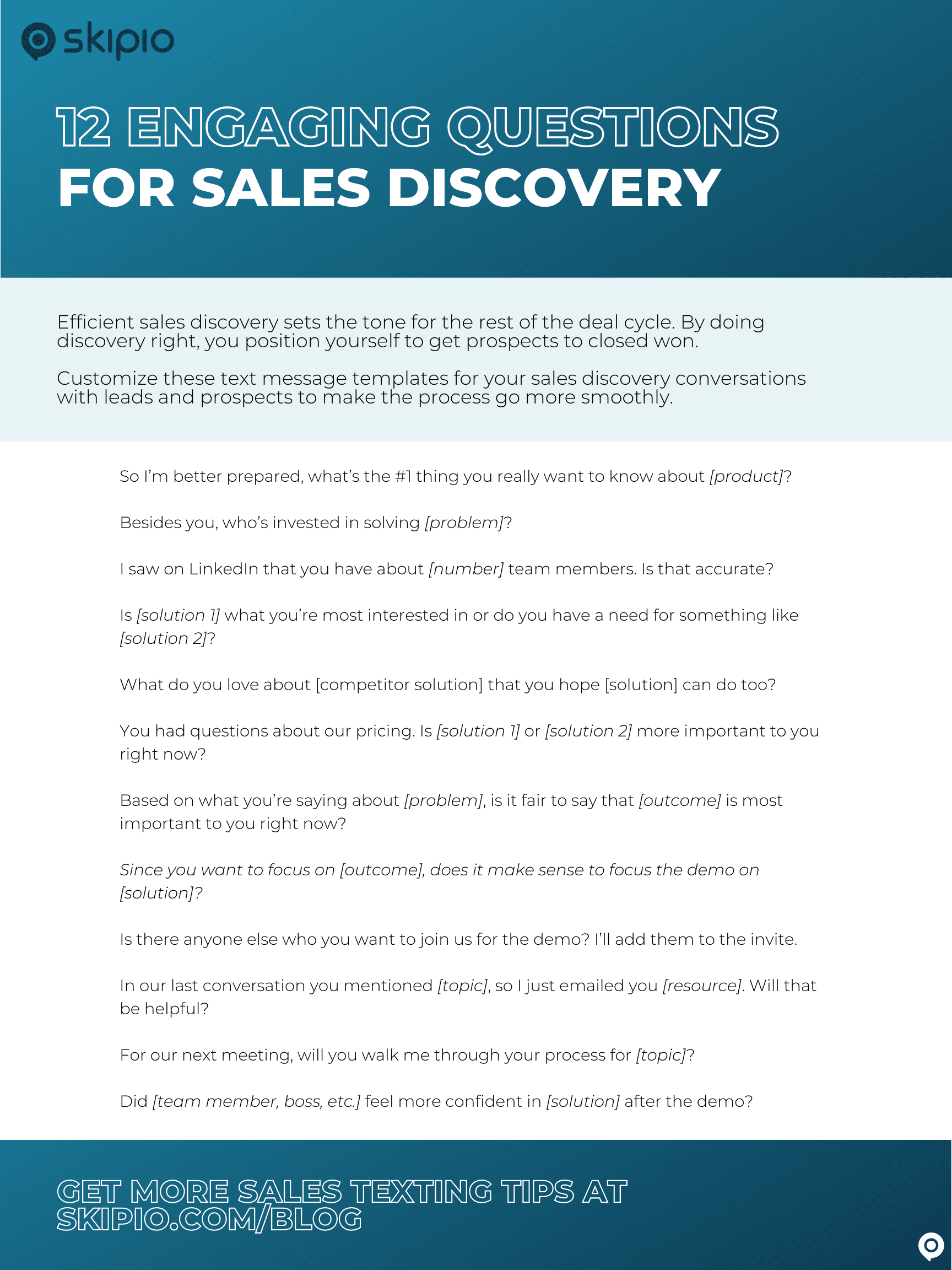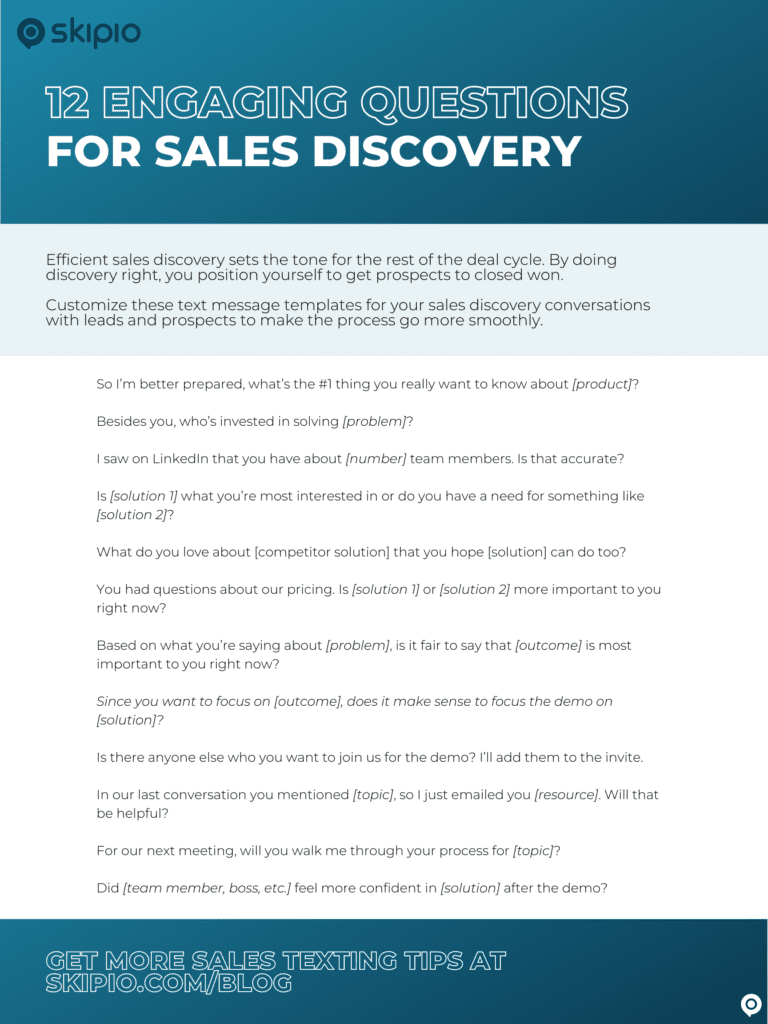
Going through the sales discovery process looks different for each sales professional. You rely on certain tactics and questions to determine fit and someone else on your team might handle discovery in totally different way.
Regardless of what exactly you do, you know that efficient sales discovery sets the tone for the rest of the deal cycle. By doing discovery right, you position yourself to get prospects to closed won.
Here’s how to use text messaging to make sales discovery go more smoothly.
Don’t try to use text messaging for all of your discovery
Text messaging works as an amazing complement to the other ways you communicate. But it shouldn’t replace everything else, especially when you’re in the early discovery stages.
It’s super convenient to ask quick, basic discovery questions through texting. It doesn’t allow for the in-depth conversations you inevitably end up in when speaking to a prospect though.
People don’t want to spend forever writing out a text about what’s going on and what they’re trying to do when it would take half the time to just tell you verbally.
Send text messages to prep for further discovery
Start feeling out the situation and the problems-to-be-solved through text messaging so that you’re fully prepared for your discovery calls.
Basically, ask questions that will help you make an agenda for what to cover in the meeting.
“So I’m better prepared, what’s the #1 thing you really want to know about (product)?”
“Besides you, who’s invested in solving (problem)?”
“I saw on LinkedIn that you have about (number) team members. Is that accurate?”
“Is (solution #1) what you’re most interested in or do you have a need for something like (solution #2)?”
Asking questions like those will help you focus the conversation of your later calls and give you opportunities to begin forming relationships with each of your prospects.
Ask one question at a time
Using text messaging to aid in discovery is about building a foundation of trust. Don’t give prospects a laundry list of questions you want answers to. If you bombard people with question after question, they stop responding.
Additionally, texts need to be short and to the point for people to care about replying. A text that looks like an email will get ignored or forgotten about. A prospect will likely read your text, realize they don’t have time to answer everything in the moment, and then never get back to it.
For the best experience, include in your first message that you have a few quick questions. Ask your first question and then wait for their reply to ask any others.
Ask subsequent questions based on people’s answers
Just like you do when actually talking to someone, tailor what you ask next to how the conversation is going. Otherwise it’s abundantly clear you’re just copy-pasting discovery questions into texts and shooting them off. That makes a prospect feel like you won’t actually listen to them.
Use any pre-written questions or templates as a starting point and customize those messages to fit into the current conversation. Get comfortable repeating back what people say and using that to transition to other questions.
“Based on what you’re saying about (problem), is it fair to say that (outcome) is most important to you right now?”
“Since you want to focus on (outcome), does it make sense to focus the demo on (solution)?
Continue “discovery” after every call or meeting
If your initial discovery goes well, you get other chances to learn about this prospect, their business, and their problems. Discovery doesn’t stop after your first meetings.
Texting is an excellent way to follow up between your phone and email interactions. You keep a pulse on the deal and how someone feels about the progress of solving their problem(s).
Ask questions like these to easily uncover other talking points that help you move them through the sales cycle.
“Is there anyone else who you want to join us for the demo? I’ll add them to the invite.”
“In our last conversation you mentioned (topic), so I just emailed you (resource). Will that be helpful?”
“For our next meeting, will you walk me through your process for (topic)?”
“Did (team member, boss, etc.) feel more confident in (solution) after the demo?”
These questions won’t likely prompt long, drawn out text conversations. That’s a good thing! You want to simply keep them engaged in the process.
Text like a human
Though sales discovery works differently at each company, all sales text messaging comes back to one thing.
Act like a person and treat people like people.
People want to reply and engage when they can tell you want to engage with them as well. By focusing on the prospect and asking genuine sales discovery questions without pressuring them, you put yourself in a better position to resolve their problems.
Download the image below as a handy cheat sheet for your sales discovery.




